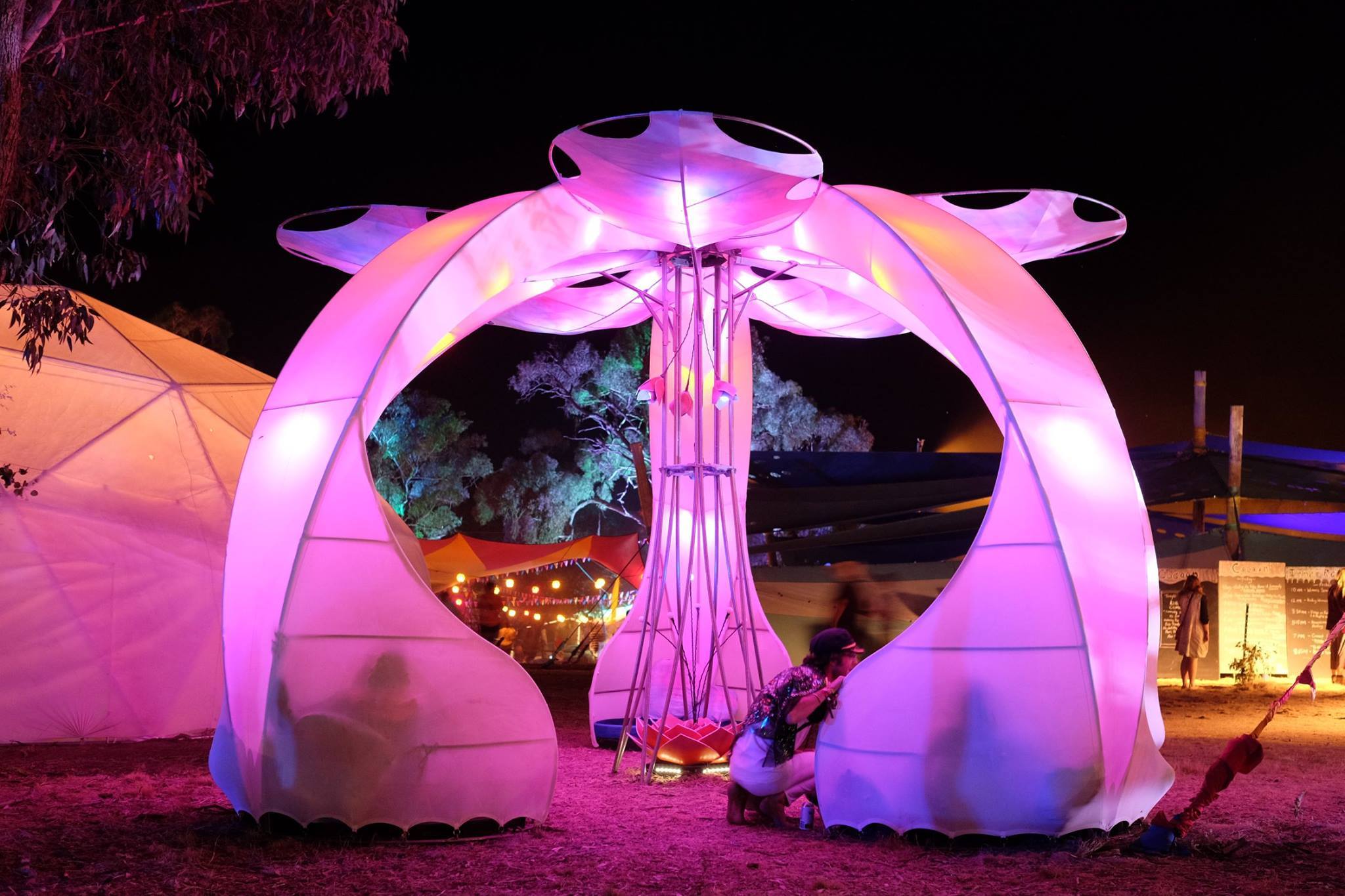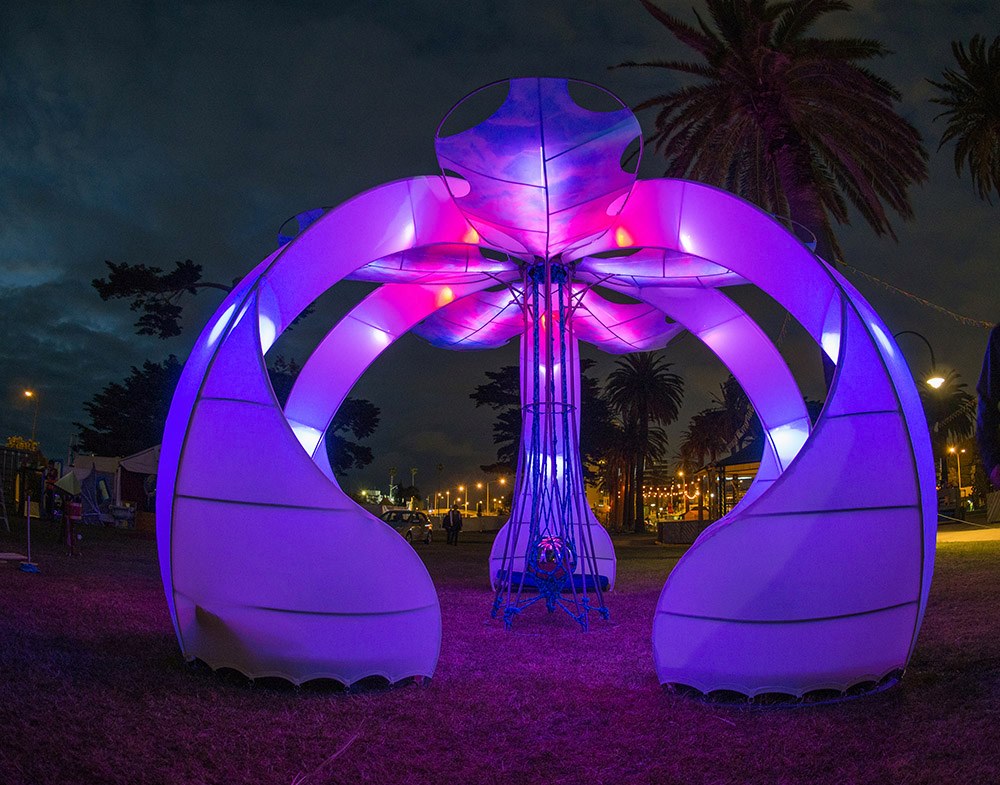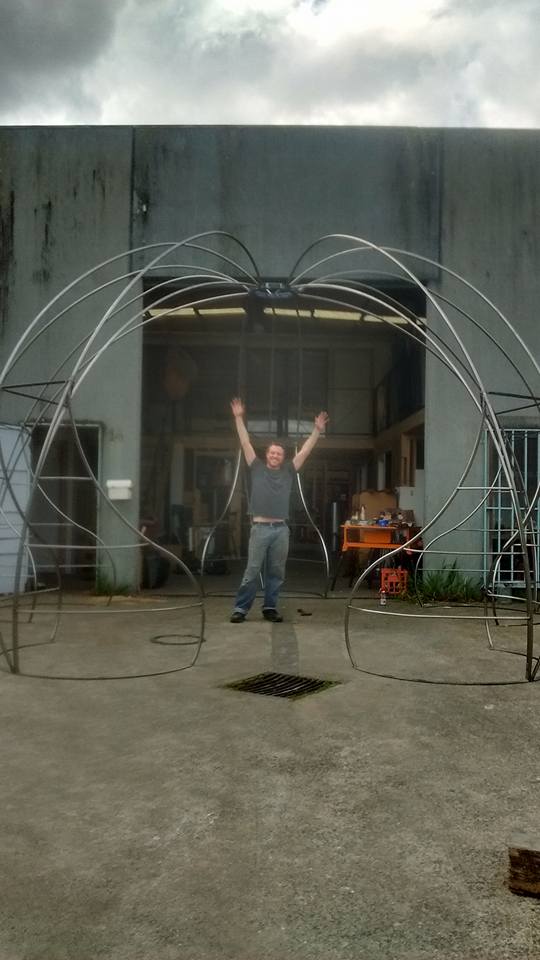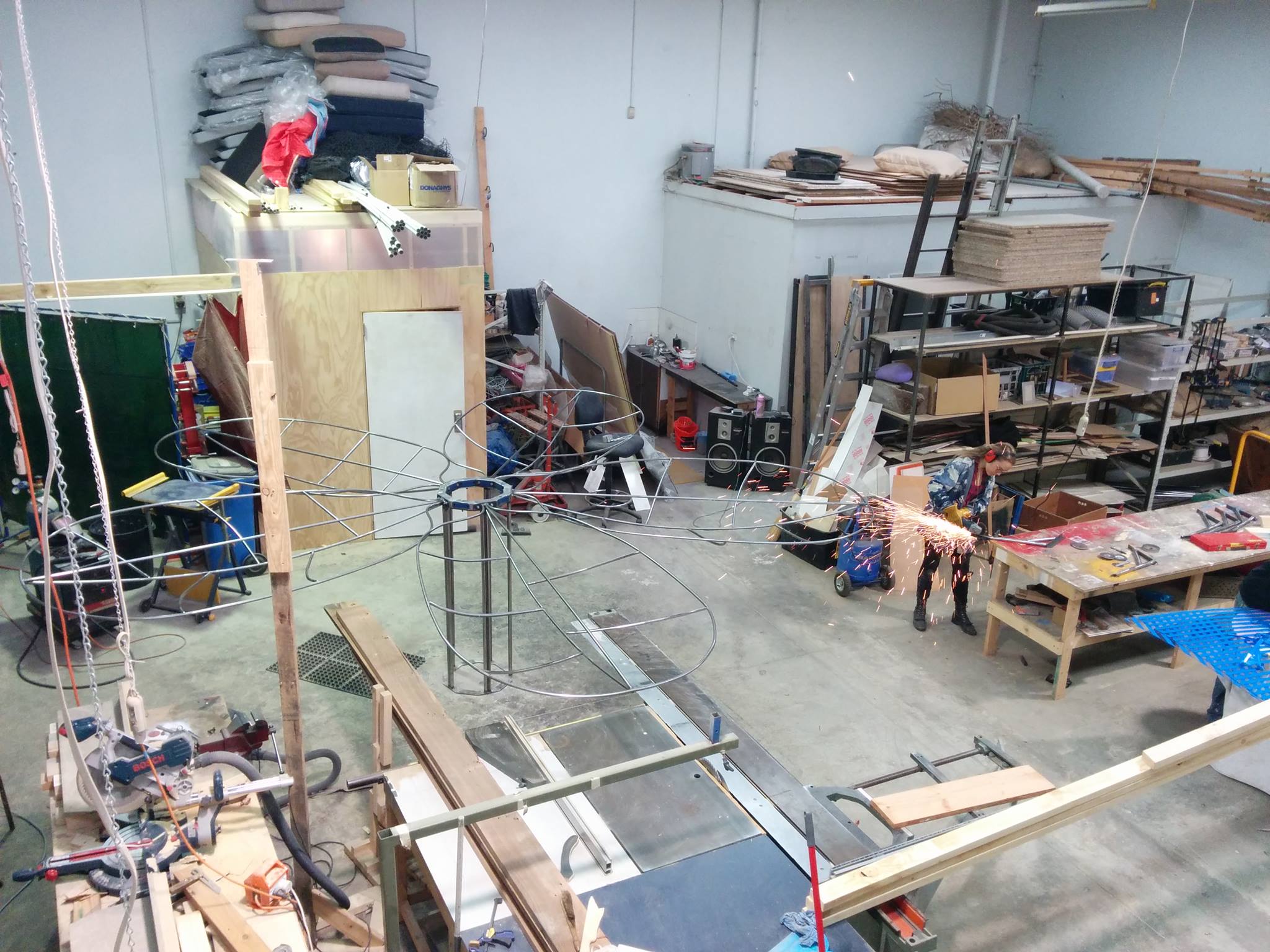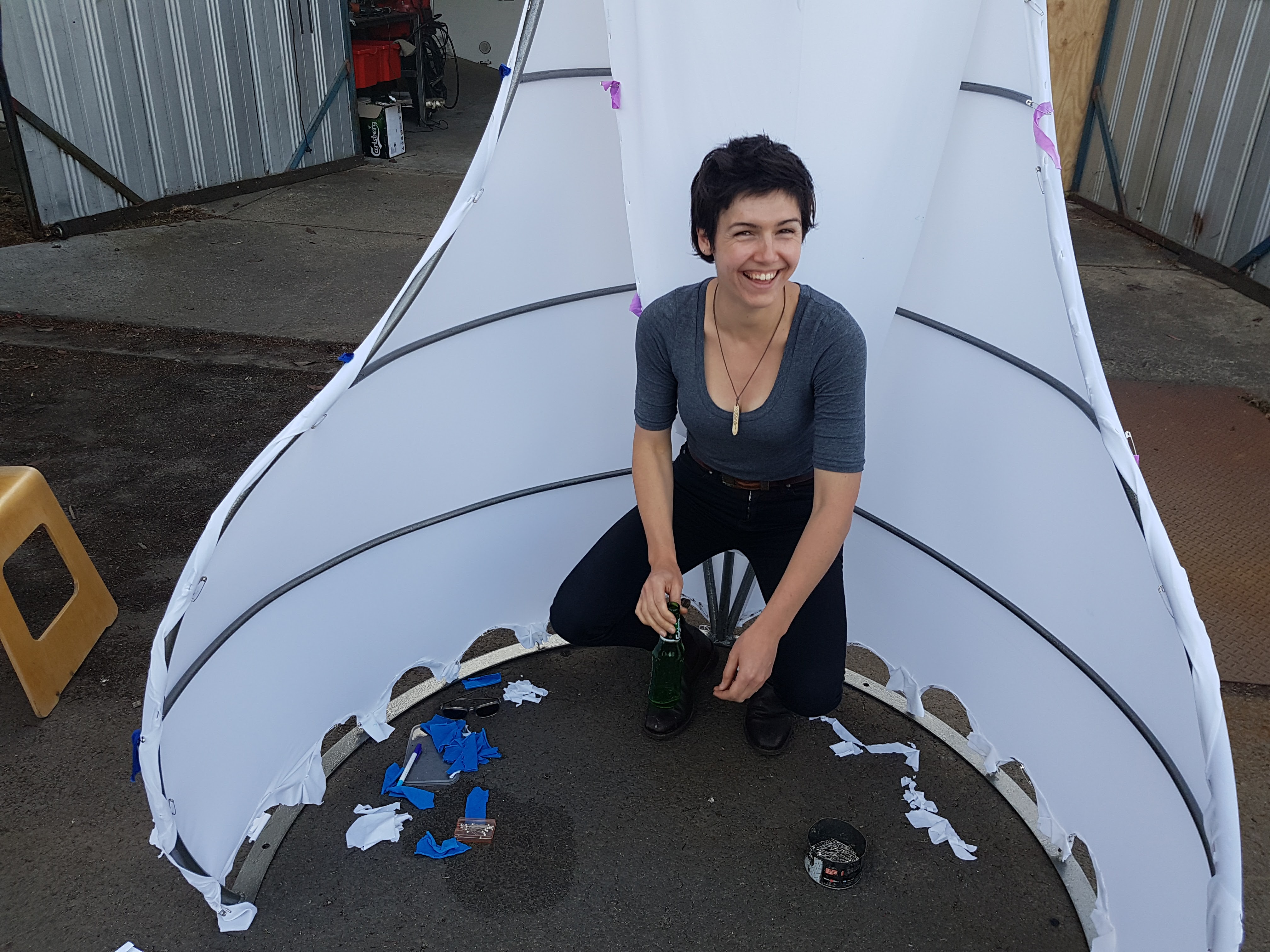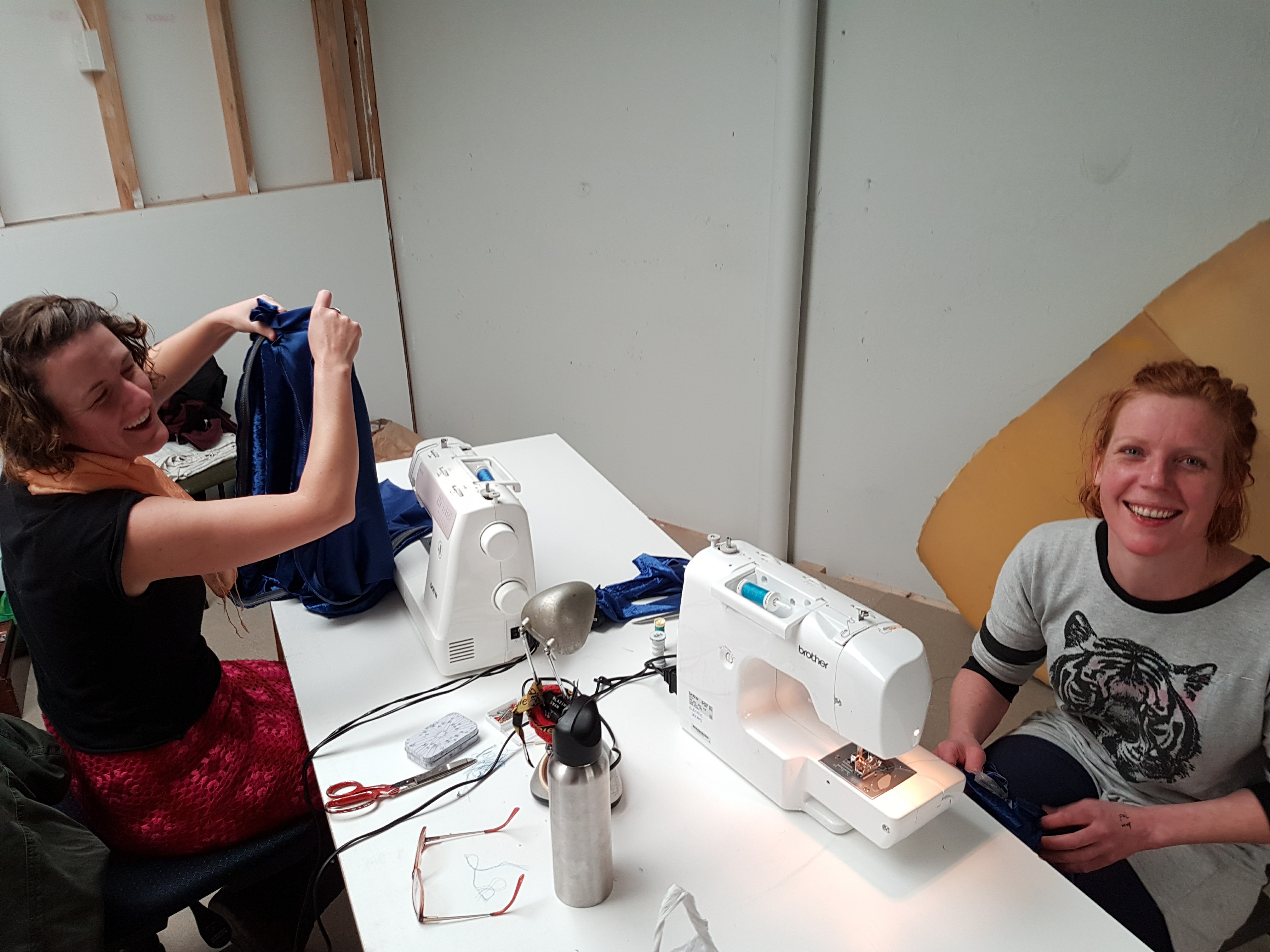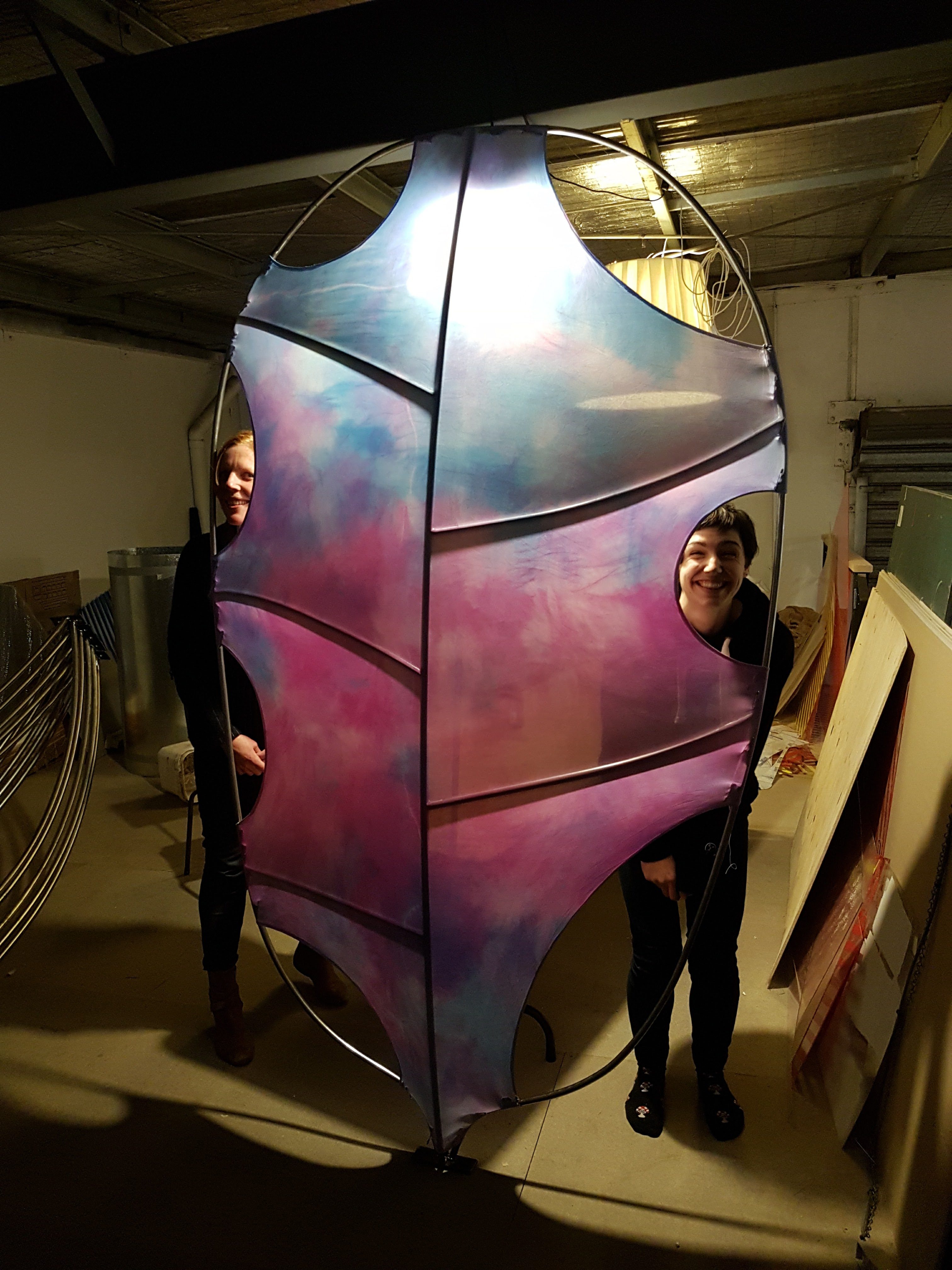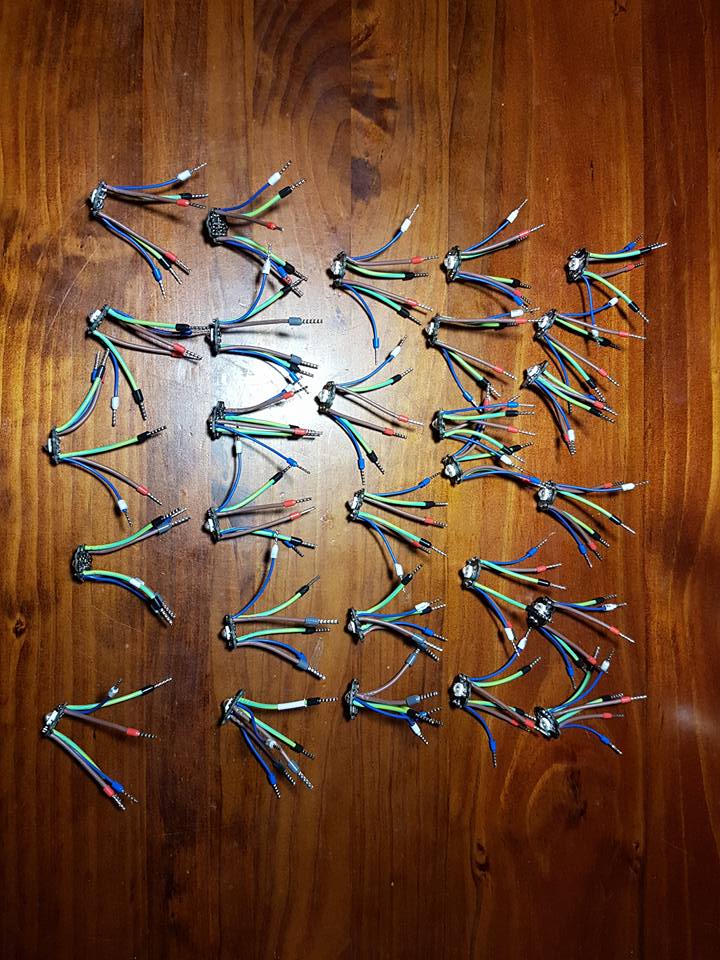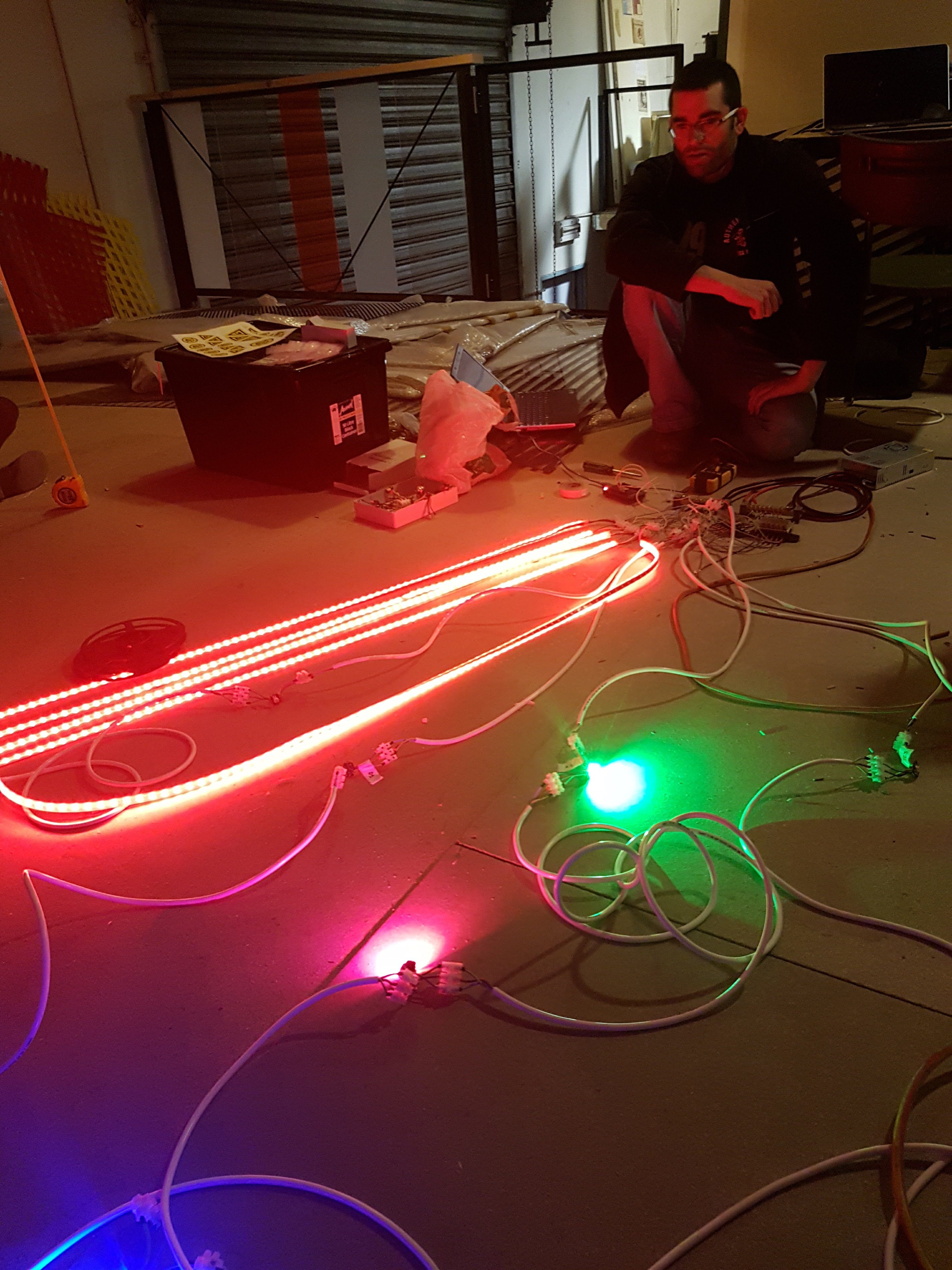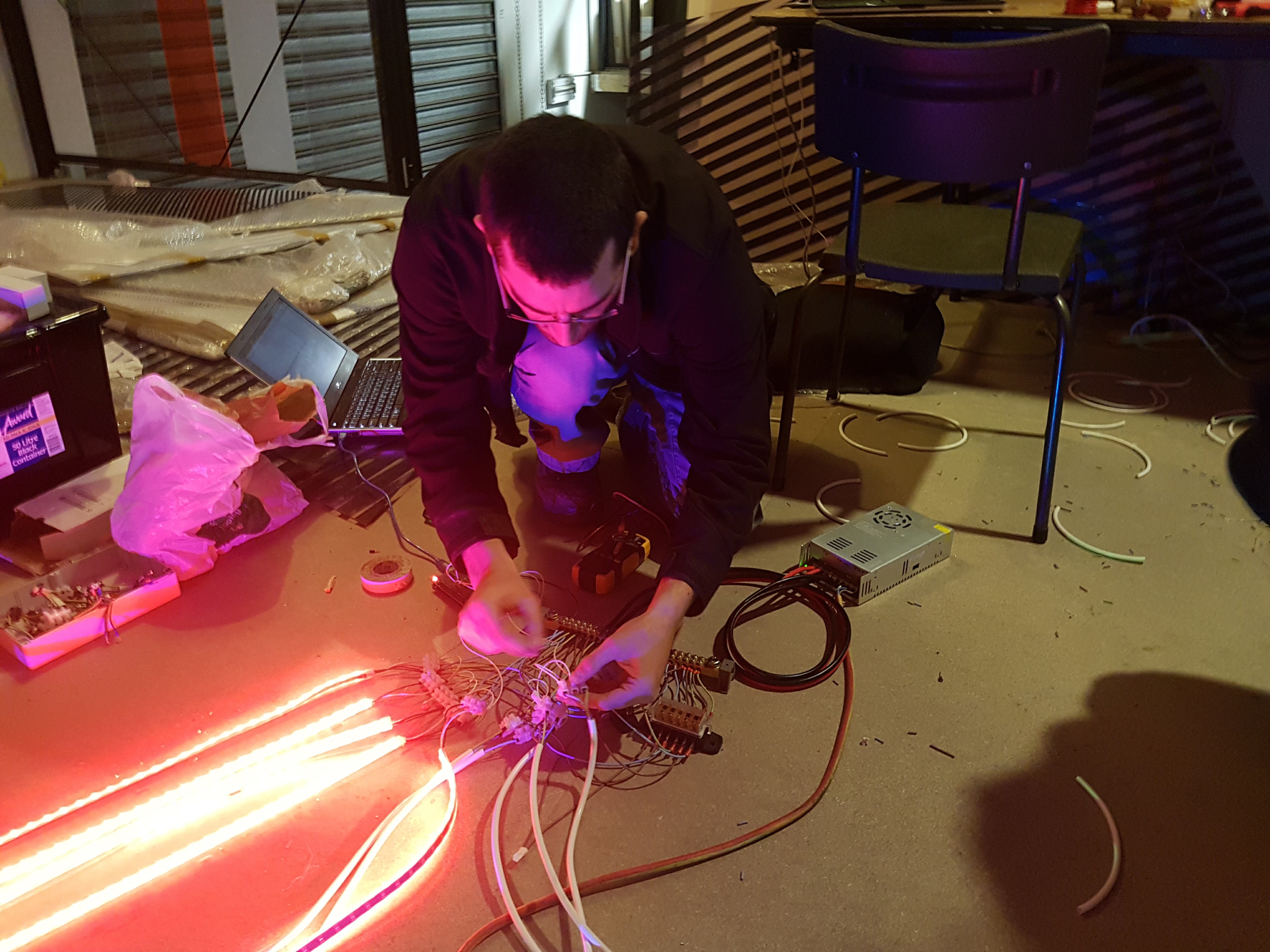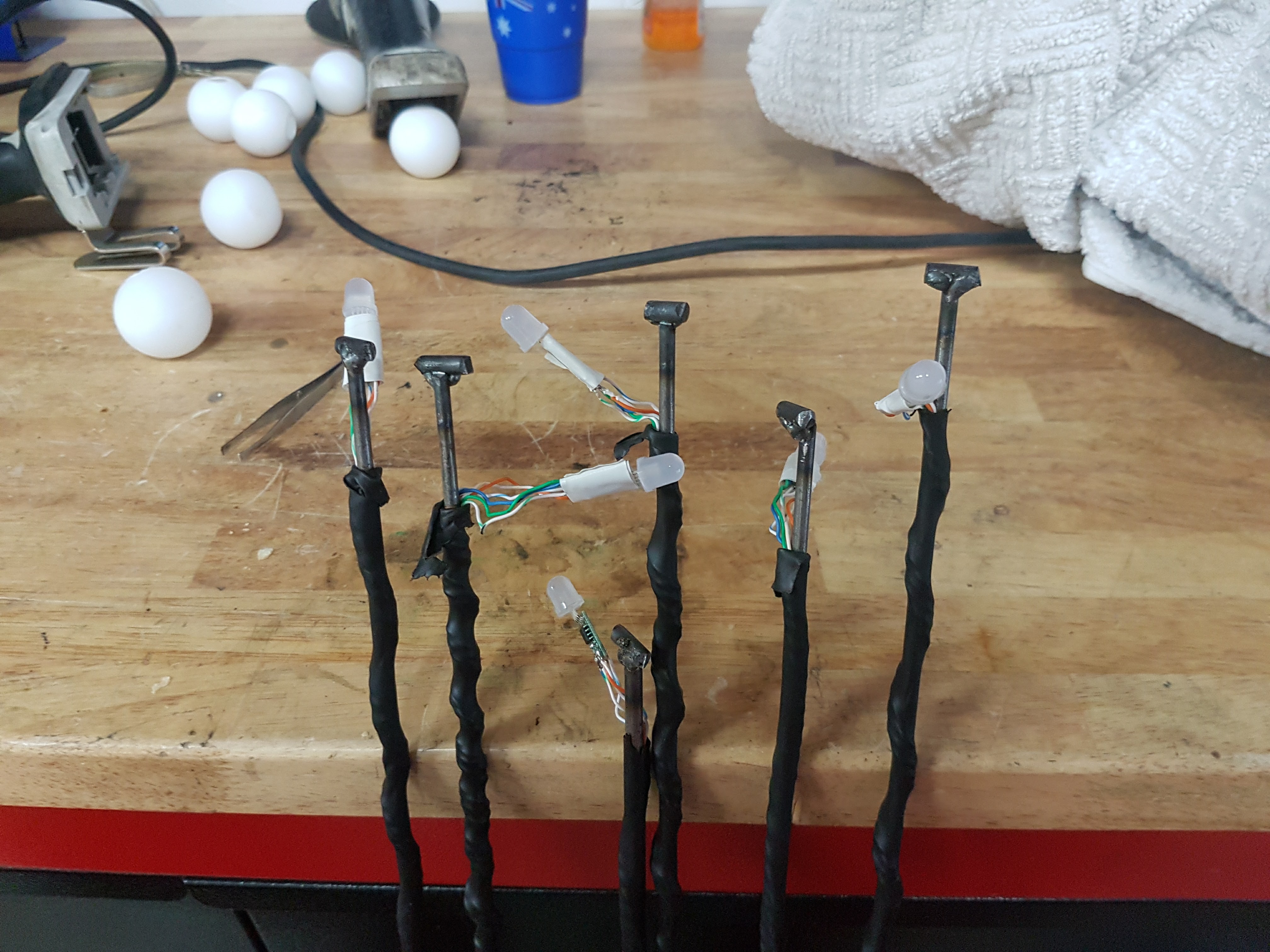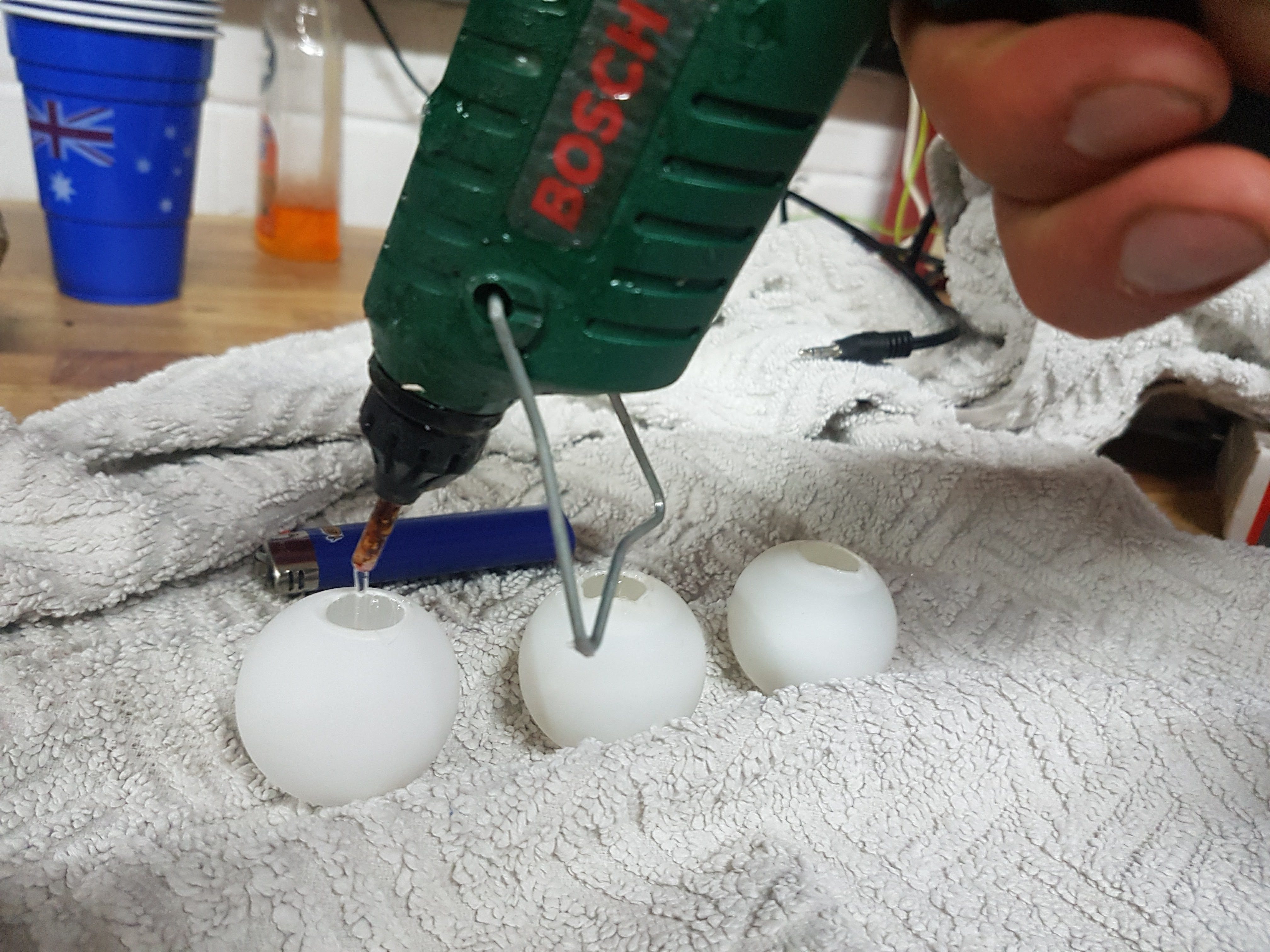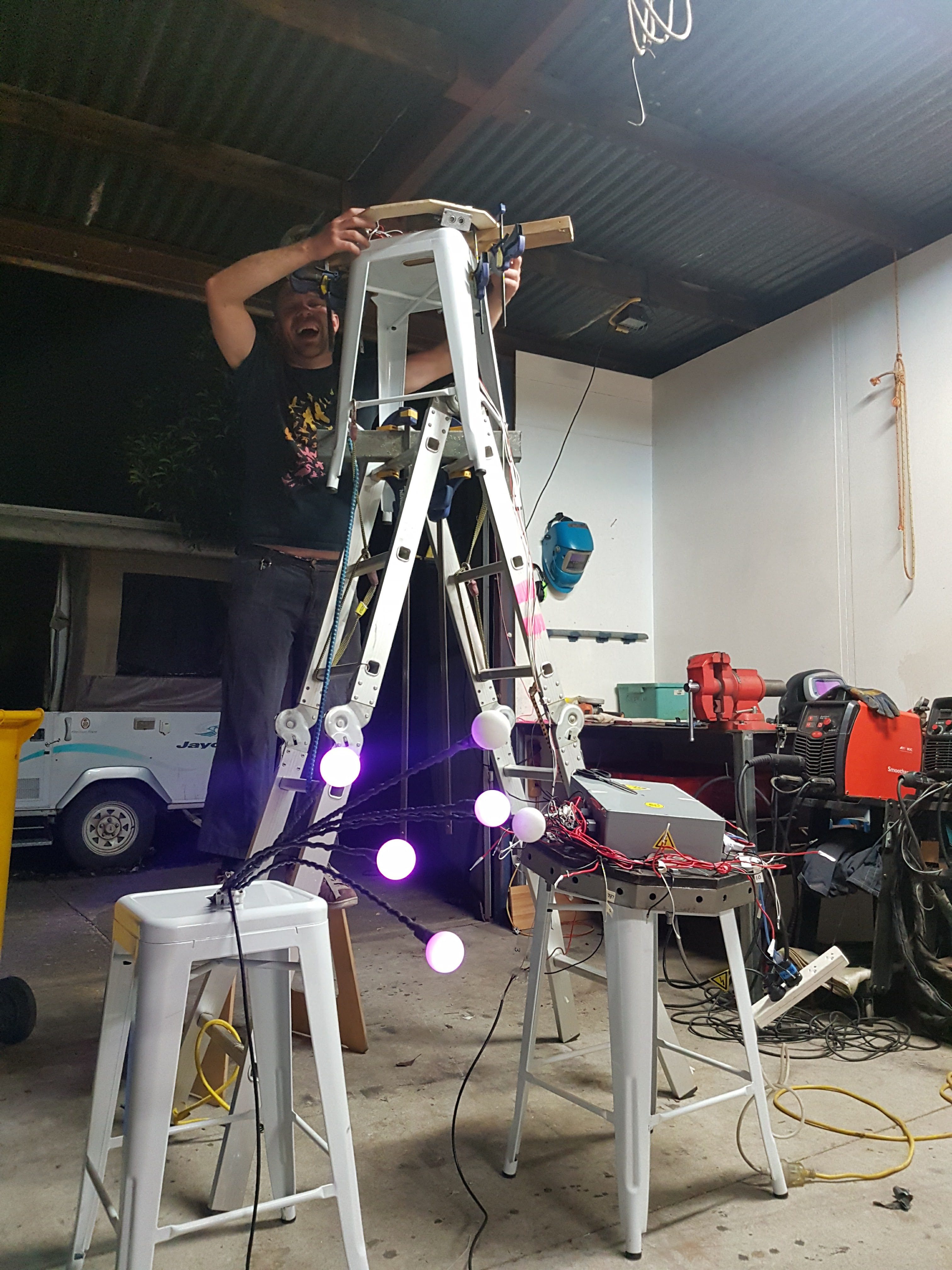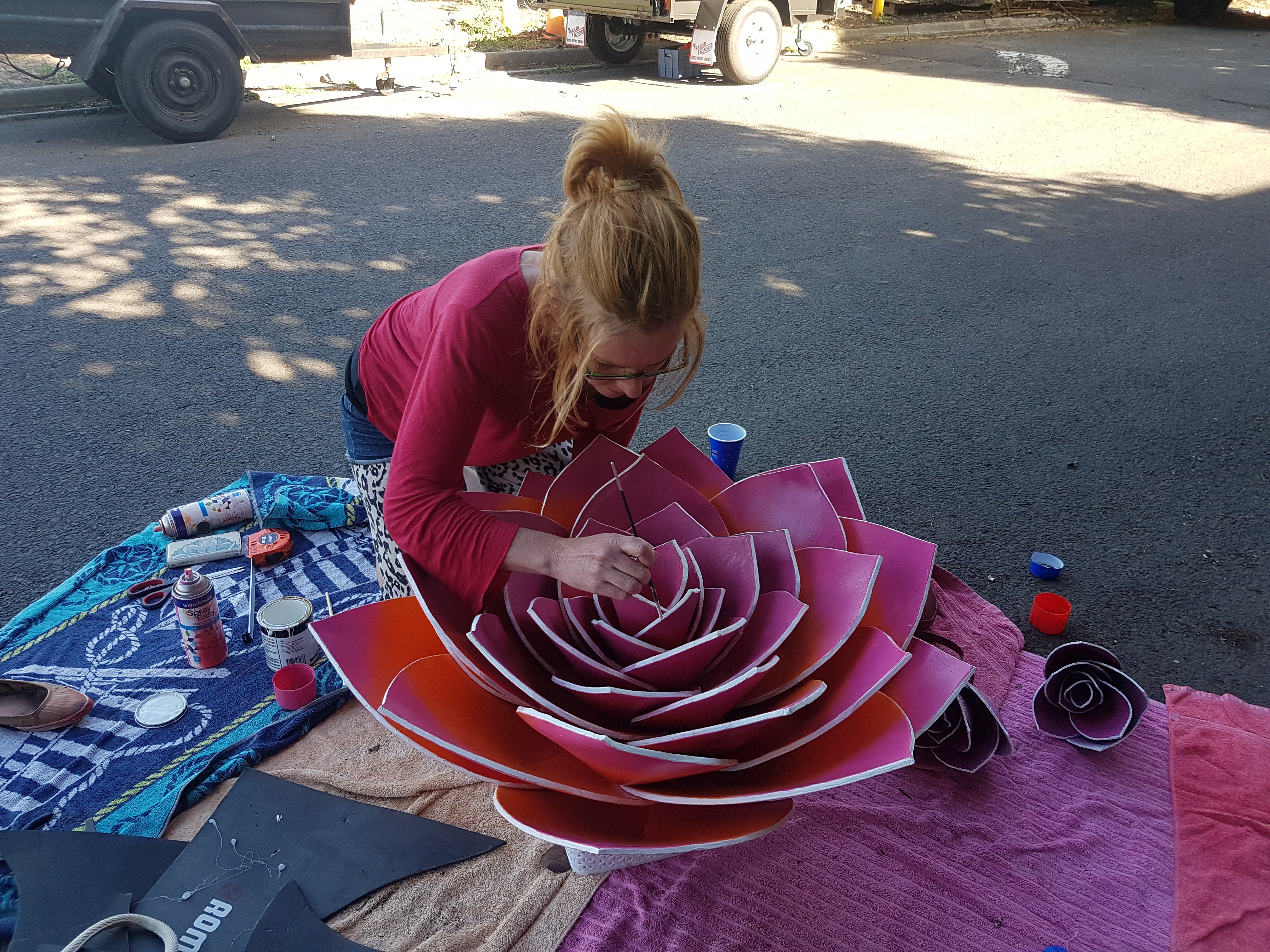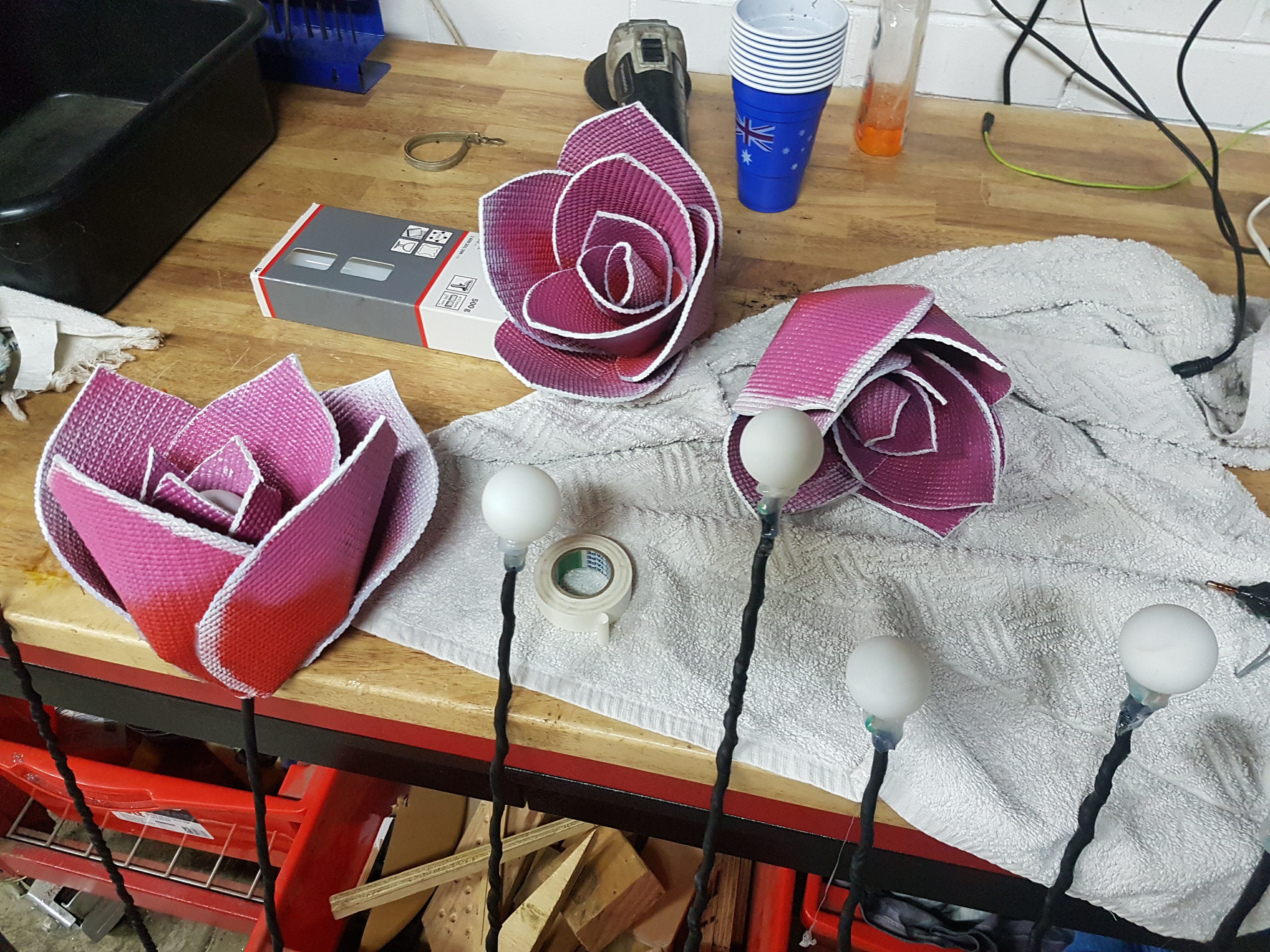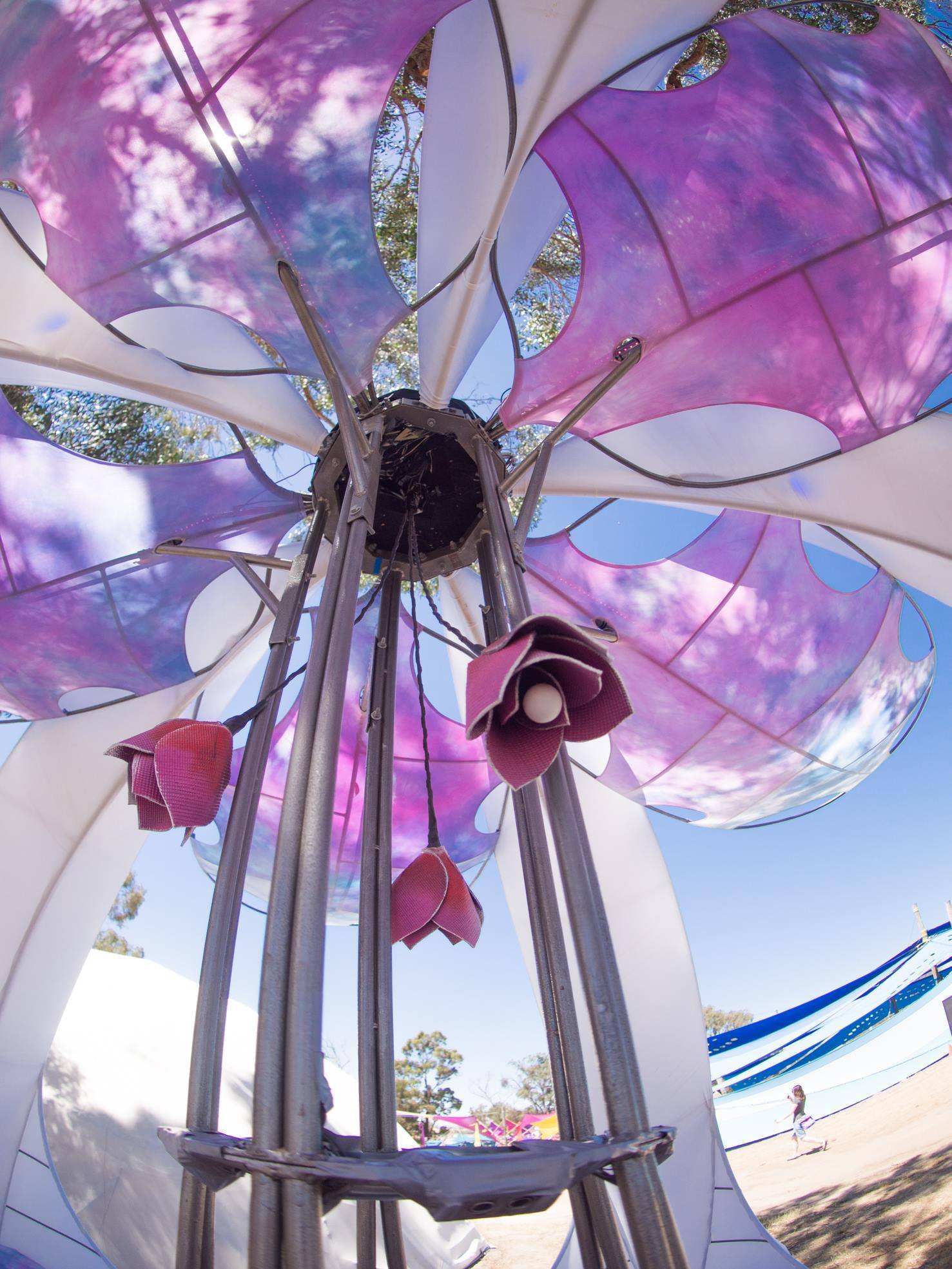Astral Arbor is part interactive art installation and part a reflective chill space for people to rest in, eat, relax, talk or sleep. A getaway from all the “normal” craziness that surrounds the Aussie Burn. Primarily a steel sculpture delicately wrapped in fabric it sits at 3.5 meters high and 6 meters across. It provides a seating area for up to 15 people at any one time, and the night time illumination will be visible from across the paddock in all directions. Interacting with the art piece that is being done by triggered its core-centrepiece.
More than 15 people were voluntary worked on this artwork in the form of painting, metal work, sewing, crafting, carpentering and more. This blog post is going to on my side of the project – electronics, electro-optics and software.
The space was born after some ideation sessions that crew had and eventually designed, rendered and brought up to virtual life by Darby, who also ran the whole project.
The frame welding was led by the amazing Naomi & Terry and was supported by many other volunteers in the form of grinding, fluffing 😉 and squirting paint so it won’t rust. The end result was so polished and magnificent that one could think it was a product that was done millions time before and it just came off a production line.
All the sewing of both the frame fabrics and the cushions were done by Hannah and Kelly with some help from volunteers. It was a huge effort that involved stuffing, tie-dye and handling with some slippery ass fabrics.
I led everything that got to do with the electronics, optics, light diffusion, hardware, software and was supported by Darby and Natalia. I join this massive 9-months project about 4 weeks after it already started rolling. This tiny delay had some consequences, because I was already working on SpaceCorn[https://dreamerbuilds.com/2016/11/2016-spacecorn-burning-seed-australia-artwork/] for Burning SEED 2016 and I was not sure what is going to be the level of my involvement in Astral Arbor till later stage, I didn’t know how the already existing crew would feel by me stepping in. As a result of that I had to work with a setup and electronics that I didn’t pick. I would have done things differently but it was what it was, the ball started rolling… Classic Burning Man project.
Designing a system for an interactive artwork is always a challenge, especially when everything has to be modular, easy to put together and take apart for easy assembling and disassembling in different events. In addition, in Victoria, Australia weather forecast is no more than recommendation so we had to prepare and make sure that our interactive artwork will work in rain, dust, heat, cold, wind… Challenging.
The main idea is simple – the whole alien-jelly fish-structure will glow at night in a relaxing red-pink-purple-blue pattern:
When interacted, it responds, the interaction is being done by approaching and standing next to the core. The feedback is in the form of lights within inside that core that signals the person that something is happening as a result of the interaction. When 5 people – the exact number of sides of the structure – are interacting with it, Astral Arbor is creating a special ritual that draws attention and then goes into cool-down mode for a certain period of time until it is ready to be triggered again:
The core is made of a beautiful flower, stamens and mini-flowers which stand in the base of the interaction.
The system architecture:
Light sources and diffusions:
Like in any other art project that involves lights, diffusion is probably the most important thing, the next thing is glitter and then probably safety (we are in a Burn project after all, safety third!)
We used 3 kinds of light sources:
1. 3W Pixies LEDs
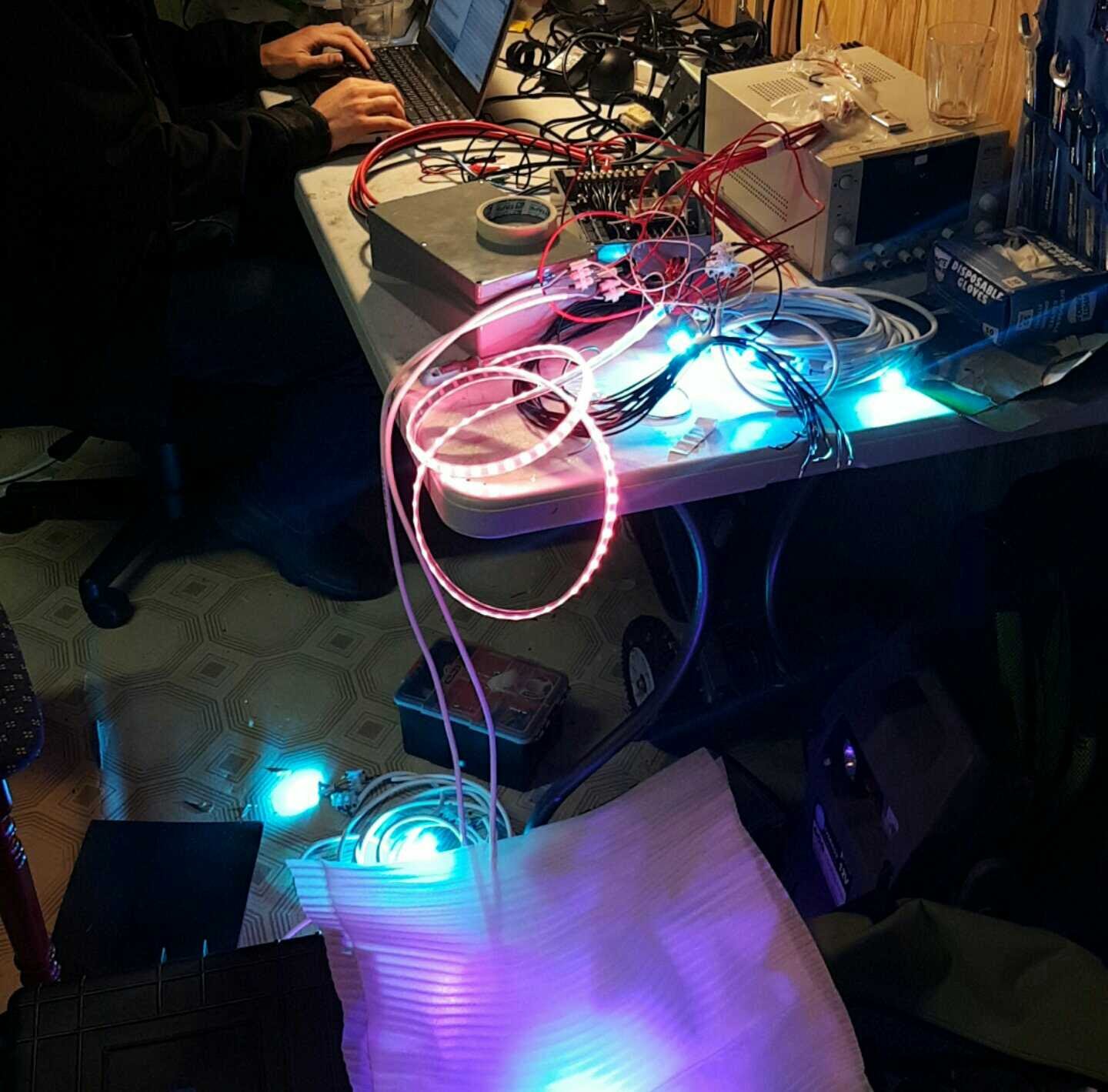
2. Addressable WS2812b 60LED/m
3. Single WS2811 8mm LEDs (cut form a chain, SpaceCorn core’s leftovers)
Each one of the light sources was used in its own way that served its purpose.
1. 3W Pixies – Those powerful 5V 3W RGB LED are basically a small PCB with a pre-made communication channel (5V serial TTL) that could be chained, be commanded individually and in real life – treat them in the same way regular addressable LED would be treated. The Pixies where use inside the structure legs, spaces equally inside each led and being defused by the Lycra fabrics that were surrounding the metal frame. The angle that the Pixies where installed in, the FOV of the led and the distances between them created an illusion of flow when the software ran a 3 RGB sine waves through the LED. This relaxing soft rhythm with carful control over the intensity created a soft ambient light that blended in the theme and the chillout atmosphere that the structure was intended to create.
2. Addressable WS2812b 60LED/m – those LED where used in two places:
a. The leafs / peddles where in the top-head of the structure, during the day, the tie-dyed Lycra created shadow for the Astral Arbor dwellers and during the night, pulsated light that was emitted from the LEDs and diffused into the tie-dyed Lycra creating a soft-tender background light on the floor of the Astral Arbor.
b. Another place that those LEDs were used was the Core Stage. The magnificent flower was mounted on a wooden stage that elevated it from the ground. That wooden stage has 5 sides like the number of legs of the structure and it was part of the interactivity of the structure – when a person came close to the core the side in which the person was standing in lighted up, signaling that the core is being triggered and that something is happening regarding interactivity – more to come on it later in the interactivity part of this build log.
3. Single WS2811 8mm LEDs (cut form a chain) – those LED where used in two places:
a. The top 3 flowers that grew from the top of the core pointing the ground.
b. The 6 stamens that were sticking out from the huge flower at the bottom of the core. 5 were representing each side / leg of the structure and were the at the base of interaction, the 6th was at the center of the flower and was design to give another level of interactivity when all 5 stamens where triggered.
The LEDs were all placed inside ping pong for diffusion and mounted on metal rods. One of my main concerns after it looked nice (Safety third!) was that at some point someone will lean or fall (yeah it happens, festivals… alcohol…) and it might hurt someone. So we filled the ping pong balls with hot glue after the LED was placed inside. It hardened the ping pong ball and created even better diffusion. Win.
Kelly & Naomi crafted the core of the art piece, started from scratch with a brilliant design using foam, spray paint and a lot of love, When eventually we integrated the electronics with the flower, stamens and the mini flowers it looks stunning. Like it was meant to be.
Interactivity:
At the base of the interactivity were HCSR-04 ultrasonic distance sensors – those sensors are usually being used in the amateur Makers-robotics world while mounted on the robots itself and helping it to avoid obstacles. This is the first test of the sensors:
The 5 sensors, each one representing a Side Leg-Stamen-Core Stage were installed in the core facing to the legs. When a person approached the core and triggered on of the sensors couple of things happened at once:
1. The relevant stamen fade in form off to purple
2. The relevant side of the Core Stage fade in from dk-apotek.com.
Here is a demo of 1 person interaction:
3. After couple of seconds that the person triggered the ultrasonic sensor the purple stamen changed into orange – signalling that it is “locked”.
The same thing would happen to each one of the sensors-stamens, once all 5 are triggered and orange locked ritual starts and the whole structure leaves its calm chillout mode into something hectic. The ritual itself is a buildup of light and sequences that building into a climax, an explosion. After the ritual ends the structure goes into cooldown mode in which it doesn’t respond to the interaction for certain period of time – this is made so the ritual triggering won’t be abused. The number of rituals that can be made is also limited in a certain period of time:
I won’t get into the bits and byte of the whole logic that was used – it was quite complicated state machine with a lot of rules, conditions, timers, logics and constraints. The tech savvy geeks can download the source code from my github (Yes, it is open source and free and ugly, the code stinks a bit, I didn’t have enough time and some of it was written in Rainbow festival itself – you have AGILE, Extreme Programming and Scrum. I had Vokda programming, and beer design)
This project was massive, Astral Arbor is a Burning SEED 2016 art project that went out of control because we pushed ourselves to the limit 🙂
Out of control in the amount of time that we, the whole team, spent on it, its magnitude and the goals the we put to ourselves. Eventually it ended up great but it wasn’t an easy journey because of a lot of reasons: the scale of the project, crappy timing and classic old underestimating the amount of work that was needed. I would do it again. the result was magnificent!
We still don’t know where Astral Arbor’s last stop will be, maybe in a botanic garden? Someone’s backyard? I guess we’ll figure it out after Burning SEED 2017.
More picture could be found in our collective website.
